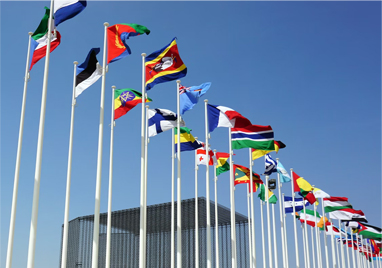EXPOS
12
Jul . 2023The energy efficiency of a building is largely determined by the materials used in its envelope. The type of insulation used is particularly important for ensuring compliance with increasingly stringent energy standards. Popular insulation materials such as XPS, PIR, PUR, and EPS each have specific qualities, and selecting the best type of insulation material for a project requires an understanding of their differences.
Different Manufacturing Processes① What is XPS?XPS (extruded polystyrene insulation) is manufactured using extrusion, a continuous process that results in a closed-cell structure with a smooth skin on the top and bottom of the board. XPS' closed-cell structure prevents water from penetrating the structure of the insulation board and provides long-term strength and durability.
② What is EPS?EPS (expanded polystyrene insulation) is manufactured using beads of foam within a mould. Heat or steam is applied directly to the beads, causing them to expand and fuse together. One cubic metre of EPS contains about 10 million beads, each counting approximately 3,000 cells that are closed off and filled with air. EPS is composed of 2% polystyrene and 98% air. The manufacturing process results in a closed-cell structure, but not a closed-cell insulation board (due to voids that can occur between the beads).
③ PIR and PURLike XPS, PIR and PUR are closed-cell insulation materials, but chemicals are the main ingredients of PIR and PUR. These insulation products consist of foam that is inserted between two liners or facings, such as a multilayer aluminium finish or mineral fleece. On the one hand, these facings ensure that the foam stays put. On the other, they trap the gas that is responsible for the excellent lambda value characterising the PU product family.
The Thermal Conductivity of EPS, XPS, PIR, and PURInsulation is one of the most practical and cost-effective ways to improve a building's energy efficiency. By improving the insulation in new and existing buildings, significant cost savings and reductions in energy usage can be achieved.
Both XPS and EPS provide good thermal conductivity performance. However, the air trapped in the voids in the EPS will conduct heat. A much higher density EPS board will therefore be required to match the thermal performance of XPS insulation.
The lambda values of PIR and PUR are even better than that of XPS, allowing for very thin insulation layers. Yet when the facing that traps the foam (and the gas in the cells) is punctured or ripped, the lambda value declines.
Excellent compressive strength is a must for insulation materials in the most challenging environments, such as under slabs on a flat roof, concrete floors, foundations, plaza and podium decks, and cold storage. In general, when densities are compared, XPS has a greater compressive strength than EPS and PIR/PUR.
The compressive strength of EPS generally starts at around 70 kPa and extends to 250 kPa. Because of the way EPS is manufactured, it cannot match the higher compressive strengths of Feininger XPS 500 and Feininger XPS 700. The numbers in the latter two product names refer to CS(10\Y)500 and CS(10\Y)700: their respective compressive strengths at 10% deformation (kPa). For EPS and PIR/PUR to achieve the same compressive strength as XPS, the density of the foam would need to be increased, often resulting in a greater thickness of board.
EPS has a water vapour diffusion resistance of 30-70, whereas XPS reaches 80-250. Slightly more permeable to air and moisture, EPS is less resistant to water vapour than XPS. If you're looking to insulate a space prone to humidity (e.g. floors, cellars, and foundation walls), XPS is your best option. PIR and PUR are a no-go in those scenarios, because water may soak into the compound of the product, increasing its weight and (in the longer term) reducing its thermal value.
About FeiningerFeininger is a "national high-tech enterprise", the chairman unit of XPS Association of China Plastics Association, a member unit of the National Plastics Standardization Technical Committee, a national-level three-star green building materials certification enterprise, and a national industry standard-setting unit.
Feininger has established the Engineering Technology Research Center of Polymer Physical Foaming Materials in Jiangsu Province, and has been rated as one of the top 10 extruded board enterprises in China by the Ministry of Light Industry of China for many years.
Feininger has passed ISO9001:2015, ISO14001:2015, ISO45001:2018 and strict FM certification and CE EU product standard certification. In 2016, Feininger won the United Nations "Ozone Layer Protection Recognition" honorary certificate.
For more information about Feininger, please visit https://www.feiningercn.com/. You can also follow us on Facebook, Twitter, YouTube, and Instagram to be the first to get the latest news.
Mobile Phonel: +86-13776668008
Email: market@feininger.cn
Website: http://www.xpsmachine.com/
Address: No.2 Zhonglin Road,TangshanIndustry Area,Nanjing City, JiangsuProvince,China
Latest News

 12 Jul 2023
12 Jul 2023 Beads Foam Experiment Machine
Usage of XPS Insulation Panel is becoming more and more common in daily life, and it is very commonly seen. XPS Insulation Panel has good performance and is very popular with consumersXPS Insulation Panel is a very common thermal insulation material in the construction industry...
 12 Jul 2023
12 Jul 2023 Beads Foam Experiment Machine
Usage of XPS Insulation Panel is becoming more and more common in daily life, and it is very commonly seen. XPS Insulation Panel has good performance and is very popular with consumersXPS Insulation Panel is a very common thermal insulation material in the construction industry...
 12 Jul 2023
12 Jul 2023 Beads Foam Experiment Machine
Usage of XPS Insulation Panel is becoming more and more common in daily life, and it is very commonly seen. XPS Insulation Panel has good performance and is very popular with consumersXPS Insulation Panel is a very common thermal insulation material in the construction industry...